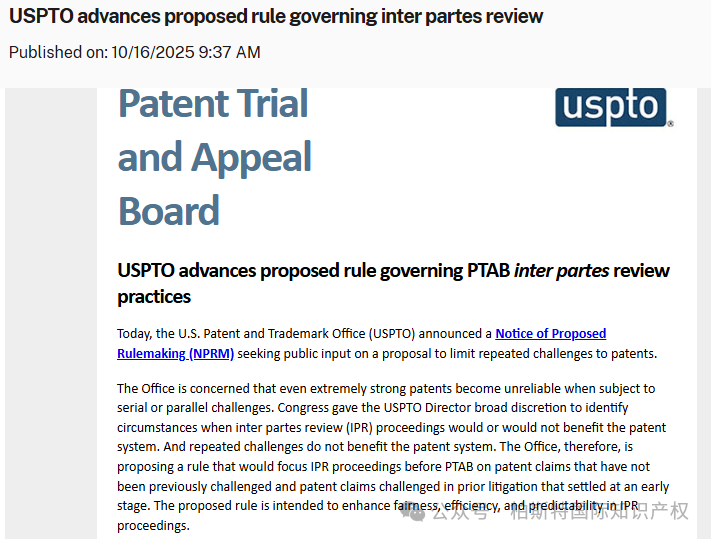- Knowledge


Today, the United States Patent and Trademark Office (USPTO) issued a Notice of Proposed Rule Making (NPRM) seeking public opinion on a proposal aimed at limiting repeated questioning of patents.
The United States Patent and Trademark Office is concerned that even highly legally effective patents may have their reliability compromised when subjected to continuous or parallel challenges. The US Congress has granted the Director of the Patent and Trademark Office broad discretion to determine under what circumstances the multi-party review (IPR) process is beneficial to the patent system and under what circumstances it is not. However, repeated questioning is clearly not beneficial to the patent system. Therefore, the bureau plans to establish a rule that focuses the multi-party review process accepted by the Patent Trial and Appeal Board (PTAB) on two types of patent claims: those that have not been previously questioned, and those that have been settled in the early stages of previous litigation. The proposed rule aims to enhance the fairness, efficiency, and predictability of the multi-party review process.
Specifically, the proposed rule will include the following:
1. Request the applicant for multi-party review to submit a written agreement, promising not to challenge the validity of the patent on other platforms based on Section 102 or 103 of Title 35 of the United States Code;
2. It is explicitly stipulated that if the United States Patent and Trademark Office or other platforms have made a ruling on the patentability or validity of patent claims, the Office will no longer initiate multi-party review proceedings;
3. It is explicitly stipulated that if another procedure is likely to first determine the patentability or validity of the patent claims based on Article 102 or Article 103, the office will no longer initiate a multi-party review procedure;
4. Allowing the United States Patent and Trademark Office to initiate a multi-party review process in special circumstances, even if a previous ruling has been made on the patentability or validity of the patent claim, or if another procedure is expected to make the relevant ruling first.
The deadline for public submission of opinions is November 17, 2025. All opinions must be submitted in writing through the Federal Electronic Rule Making Portal (www.regulations. gov).
The introduction of this rule means:
The USPTO has significantly raised the threshold for invalidation of US patents, directly protecting the interests of patent holders. Once implemented, this plan will attract a large number of patent holders to engage in rights protection activities in the United States in the coming years. Many companies with patents in the United States will face increasing patent lawsuits.
For true innovators, this is indeed a policy that can stimulate innovation, but it is not ruled out that some speculators may take advantage of this system and become profit-making tools.




